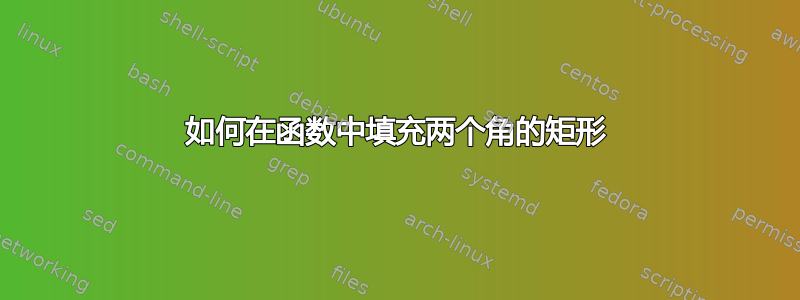
我希望能够对任何功能应用下图中的相同功能:

现在我的代码是这样的(这是 Tex.sx 中某些帖子的编辑版本):仅完全填充曲线下方!
\documentclass[11pt,bezier]{article}
\usepackage{xstring}
\usepackage{collcell}
\usepackage{pgfplots}
\usetikzlibrary{patterns}
\begin{document}
\begin{figure}[ht!]
\centering
\begin{tikzpicture}
\begin{axis}[xmin=-1,xmax=9,xlabel={Y},ymin=0,ymax=10]
\addplot[color=black,domain=-1:9,samples=100]
{(-(x-3)^2+(x-3)^4-(x-1)^3+4)/40+5};
\addplot[color=black,fill=lime, domain=5.8:7,samples=100]
{(-(x-3)^2+(x-3)^4-(x-1)^3+4)/40+5} \closedcycle;
\end{axis}
\end{tikzpicture}
\end{figure}
\end{document}
答案1
您可以使用相对坐标和--cycle(而不是\closedcycle)来获得:
\documentclass[border=2pt]{standalone}
\usepackage{pgfplots}
\begin{document}
\begin{tikzpicture}
\begin{axis}[xmin=-1,xmax=9,xlabel={Y},ymin=0,ymax=10]
\addplot[color=black,domain=-1:9,samples=100] {(-(x-3)^2+(x-3)^4-(x-1)^3+4)/40+5};
\addplot[color=black,fill=lime, domain=5.8:7,samples=100]
{(-(x-3)^2+(x-3)^4-(x-1)^3+4)/40+5} -- +(axis direction cs:-1.2,0)--cycle;
\addplot[color=black,fill=cyan, domain=7:5.8,samples=100]
{(-(x-3)^2+(x-3)^4-(x-1)^3+4)/40+5} -- +(axis direction cs:1.2,0)--cycle;
\end{axis}
\end{tikzpicture}
\end{document}



